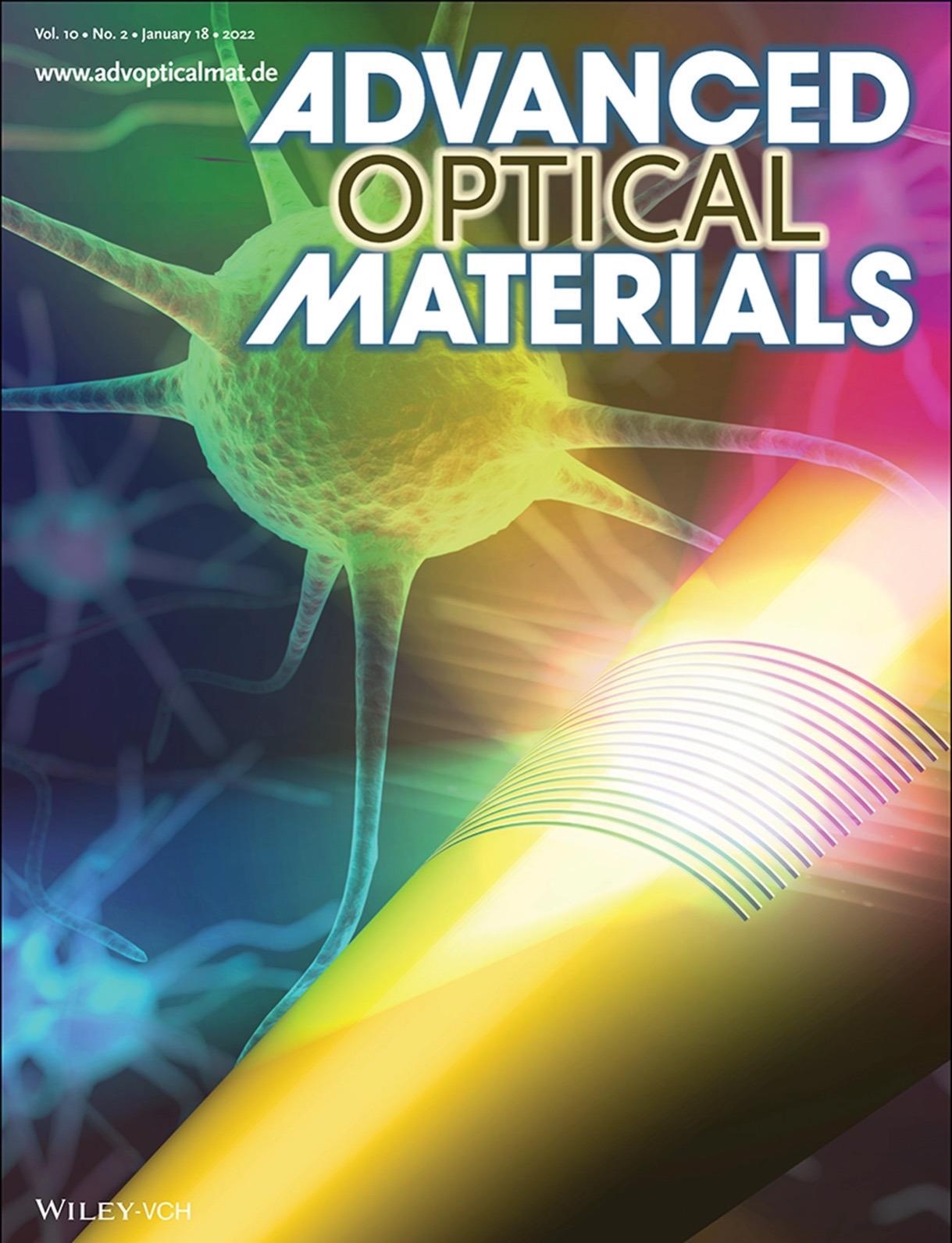Scientists can depend on a formidable tool — light — when it comes to recording and stimulating brain activity. An international team of researchers, directed by Istituto Italiano di Tecnologia (Italian Institute of Technology/IIT), has created nanometric light modulators that, built on a micrometric optical fiber, make the fiber capable of analyzing neuronal tissue in deep regions of the brain.
 Graphic representation of the neural probe interacting with a neuron. Image Credit: Antonio Balena (IIT).
Graphic representation of the neural probe interacting with a neuron. Image Credit: Antonio Balena (IIT).
The new method, reported in Advanced Optical Materials and presented on the journal’s front cover, lays the foundation for a ground-breaking type of minimally invasive neural probe that can be used to examine the central nervous system. The nanomodulators will be used to explore particular brain diseases, including epilepsy and brain tumors.
The research was performed by IIT in partnership with the University of Salento (Italy), the Politecnico of Bari (Italy), the Consejo Superior de Investigaciones Cientificas (CSIC, Spain) and the Centro National de Investigaciones Oncologicas (CNIO, Spain).
The study’s first author is Filippo Pisano, a scientist at IIT’s Center for Biomolecular Nanotechnologies (CBN) in Lecce, Italy, coordinated by Marco Grande of the Politecnico di Bari and CBN Principal Investigators Ferruccio Pisanello and Massimo De Vittorio.
In Italy, the interdisciplinary team was focused on obtaining micrometric structures that are capable of examining neuronal tissue in a thorough way using light, i.e., through the integration of optical nanomodulators.
To achieve this, researchers integrated expertise in nanoscale fabrication and biomedical neuro-engineering, so as to manipulate the physics of surface plasmon polaritons and develop an investigative tool that adjusts and amplifies the way light can excite and monitor particular areas of the brain.
They began from a tapered optical fiber, thinner than a hair, and then they fitted it with nanostructures that resonate in reaction to a light stimulus added by the fiber itself into the deep brain regions.
The nanostructures were developed by coating the microscopic tip of the probe with a thin layer of gold. Then, using a gallium ion beam as a chisel, they fashioned a grid of nanoscopic optical elements, comprising 100 nm thin lines, whose features were confirmed in a series of microscopy and optical spectroscopy experiments.
As a result of this production technique, it was possible to acquire a tool that allows both the probe light beam modulation and the local electric field acting on surfaces comparable to the size of brain cells to be regulated. Scientists may be able to then explore the interaction between the light beam and neuronal structures, even in the deepest areas of the brain.
The possibility of developing such implantable plasmonic systems provides a new perspective in the research of the central nervous system: the amplification created by the nanostructures is meant to be an efficient tool for sensing the biochemical and cellular structure changes underlying the source of numerous neural disorders.
Thus, the part of the international team working out of Spain is concentrating on the application, it may have. Experimental scientists at CSIC led by Liset M de la Prida are aiming to apply these probes in the exploration of post-traumatic epilepsy and neurodegenerative diseases, for example, Alzheimer’s disease.
While the Brain Metastasis Group directed by Manuel Valiente at the CNIO will explore the use of this new technology to differentiate primary from metastatic tumors, whose treatments are diverse, as well as the use of light to permeabilize the blood-brain barrier, permitting anti-tumor drugs to travel via the vascular barrier.
Journal Reference:
Pisano, F., et al. (2022) Plasmonics on a Neural Implant: Engineering Light-Matter Interactions on the Nonplanar Surface of Tapered Optical Fibers. Advanced Optical Materials. doi.org/10.1002/adom.202101649.